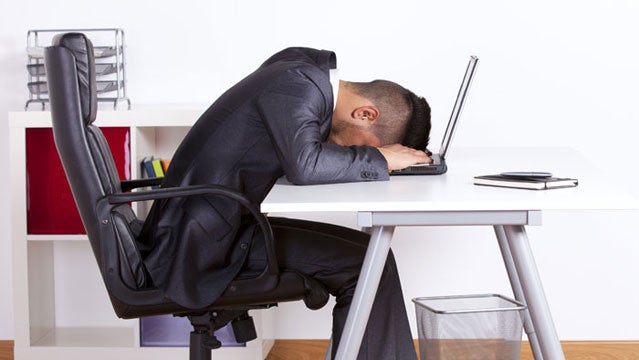First, rid yourself of the stereotype that naps are the routine of lazy people. In just about every possible way, an afternoon doze has been shown to boost performance and health. The majority of the population in the U.S. could use a power nap. In 2001, the found that 63% of adults got less than eight hours of sleep a day and roughly 40% had trouble staying awake. A lack of sleep can lead to increased stress and leave your immune system compromised, allowing sickness to take hold. A good nap can reduce stress, lead to quicker reaction times, and improve overall fitness.
To reap the rewards of a nap, you’ll want to start off the right way. I learned by failing. Here’s everything you need to know to take a nap at work, starting with getting permission.
Asking Your Boss
It bears repeating, naps are good for health and work performance. Taking 20 minutes out for sleep can allow you to pack loads of work into an otherwise waisted, drowsy afternoon. The first thing you’ll want to do before going to El Jefe is to learn the benefits. A found that people who took naps performed better on motor skill tasks and memory tests than those that swallowed the caffeine equivalent of a cup of coffee.
A reinforced the findings on memory for nappers versus non-nappers. And the benefits extend on—a showed that nappers performed better on memory tests the day after.
A showed that nappers increased their ability to take in new material—siestas help clear storage space in the brain. And then there’s this, people who took naps were than those who didn’t. Still worried about what your boss might come back with? Read this debate about the benefit of naps in . Consider all the of the situations below so your ready to handle any retort.
Find a Place to Sleep
If you can’t go home, you’ll want a place at the office that’s quiet, dark, and comfortable. Avoid any place with heavy traffic or that will have chatter outside of the door. I slept between storage shelves in the basement. An empty office will work just as well. Don’t sleep in a chair. The awkward sleeping positions can make falling alseep work, and can lead to weird kinks and cramps.
Bring something familiar from home that will ignite your rest—a comfortable pillow or blanket. Think about setting up the space as a communcal place where others can nap. Both for employees. Having coworkers in on an office sleep regimen can help drum up support. Set up a sign up sheet with times for the month.
Consider a Time and Duration
Think about when you get tired in the afternoon and make a conscious effort to nap at that time everyday. When do your eyelids normally get heavy? When do you go for an afternoon cup of joe?
“For many it might be right after lunch or at 3 p.m.,” says Stanford’s Dr. William Dement, the father of modern sleep medicine.
If you go to sleep early or wake up early, a time after lunch might work best. If you stay up past midnight, 3 p.m. may be the time. Avoid napping too close to dinner as it will likely affect your night’s sleep. To get some benefits from your nap, you should sleep for at least 20 minutes, but not longer than 90 minutes. (If you only have two 15-minutes breaks at work, consider combining them for one break in the afternoon so you can take a 30-minute nap.)
Longer naps can put you in a state of drowsiness. “If you under or oversleep, there is a chance that you can wake up within delta brain waves, which is better known as Slow Wave Sleep,” says Nick Winkelman, a fitness expert at Athletes’ Performance in Phoenix. “Waking up in this stage can feel like what is known as “sleep inertia” and you will feel a resistance to waking up.”
If you do feel drowsy, splash some cold water on your face for a wake-up. Set a timer so you don’t stress out about oversleeping.
Kick the Afternoon Caffeine
Try to limit coffee to just one cup early in the morning. The effects should wear off after lunch.
Count Sheep
As hokey as it sounds, it helps to have something to think about besides work, at work. I put on Etta James or Sam Cooke. Counting sheep, the sound of waves, or waterfall background noise might do the same. For many, a can do the trick.
Stick To Your Routine
For someone with a quiver of unpredictable tasks, this will be the hardest part. Setting other people or chores aside may lead to feelings of guilt or laziness, but it has to be done. If you start off wavering on your commitment, your body will have a harder time slowing itself down in a routine manner. Keep a nap log everyday after you rest. That way, if you do have trouble, you can look back and figure out what things to adjust for success.
Need to know more? Check out the . It has everything you need to know, from the latest sleep research to .


